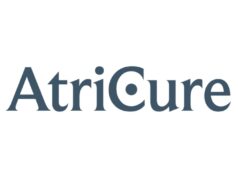
The use of a smartphone-based mobile application may be an effective method for improving medication adherence and risk-factor control among stroke survivors, and appears to be a feasible approach in low- and middle-income countries (LMICs). This is the salient finding of a single-centre randomised study, performed in South India and published recently in the International Journal of Stroke.
Corresponding author P N Sylaja (professor and head, Department of Neurology, Sree Chitra Tirunal Institute for Medical Sciences and Technology [SCTIMST], Trivandrum, India), Veena Babu (PhD scholar, Department of Neurology, SCTIMST, Trivandrum, India) and their team conducted an unblinded, single-centre, double-arm randomised controlled trial (RCT) with 1:1 allocation, evaluating the smartphone application’s utility among stroke survivors. More specifically, they aimed to determine whether the application could improve medication adherence and risk-factor control, and provide patients with health education relating to lifestyle and behavioural modifications.
According to the researchers, this study was conducted against the backdrop that “there are little data on the use of smartphone-based applications for medication adherence and risk-factor control for the secondary prevention of stroke in LMICs”.
Their primary outcome measure was medication adherence, with co-primary outcomes of lifestyle and behavioural factors, as well as control of vascular risk factors. All of these outcomes were measured at three and six months in the trial. Among a total of 351 stroke survivors who were screened for the trial, 209 were recruited, with 105 ultimately being randomised to the intervention group and 104 to the control group. The mean age across both groups was 60 years.
As per the trial’s primary outcome measure, Sylaja, Babu and colleagues report that mean medication adherence “significantly improved” in the intervention group, as compared to with controls; the researchers observed a between-group difference of 0.735 (95% confidence interval [CI], 0.419–1.050; p<0.001). Investigators also found that—in addition to being in the trial’s intervention group (odds ratio [OR], 4.5; 95% CI, 2.3–8.9)—other factors that turned out to be “significant predictors” of good medication adherence were stroke recurrence (OR, 3.3; 95% CI, 1.9–7.8) and regular physician visits (OR, 2.1; 95% CI, 1–4.4).
Moving on to discuss the co-primary outcomes of their trial, Sylaja, Babu and colleagues relay that—compared to the control group—patients in the intervention group had a greater improvement in self-reported healthy diet intake (p=0.003) and intake of fruits (p=0.005), and were physically more active (p=0.001) as well. At the six-month timepoint, mean fasting blood sugar (p=0.005) and high-density lipoprotein cholesterol (p=0.024) were also higher in the intervention group versus with controls.
According to the investigators, medication adherence and risk-factor control is “very poor” in stroke survivors in LMICs, which leads to a high risk of stroke recurrence. A lack of availability of primary care physicians, and financial barriers, are among key limitations here. Researchers believe that, if an app like the one evaluated in their study can help stroke survivors with medication adherence and monitoring of risk factors, it can reduce the caregiver burden, and has implications for health workers in improving stroke prevention in the community.









